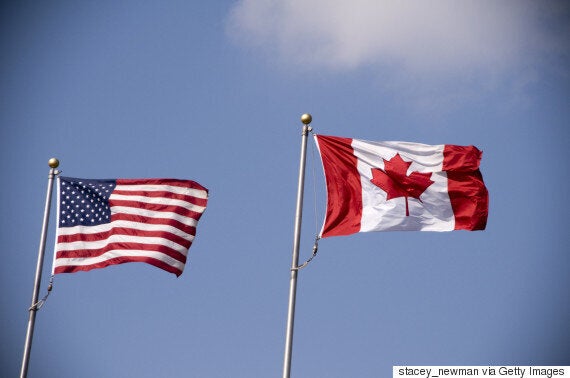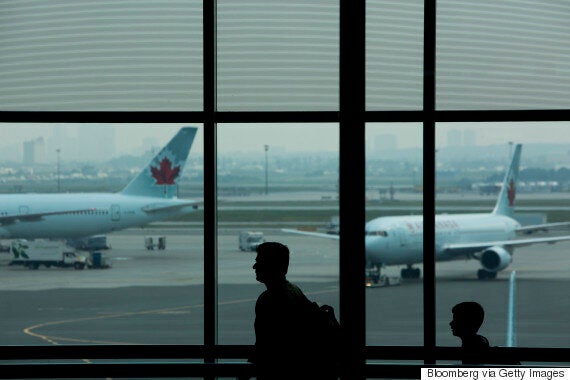While Canada and the United States share the longest, most open and successful international boundary in the history of the world, each country reserves its sovereign authority to regulate access. We each set and enforce our own rules. But we also each expect all our citizens to be treated fairly and border rules to be administered properly, in both directions.
Over the past two centuries, our two nations have learned the enormous value that flows from a strong border relationship. We both want that boundary line to be safe and secure. We also want it to be efficient and expeditious.

More than 400,000 people flow back-and-forth between Canada and the United States every single day. Close to $2.5 billion in two-way trade moves between us every day. In both commercial and personal terms, the relationship is enormous. And mutually beneficial.
Preclearance
One tool to help keep our borders secure and efficient is a program called "preclearance." For travellers going from Canada into the U.S. by air, it has existed in one form or another for more than 60 years. It's now available at eight Canadian airports -- Vancouver, Calgary, Edmonton, Winnipeg, Toronto Pearson, Ottawa, Montreal and Halifax.
Over 12 million passengers from Canada benefit from air preclearance every year.
This service allows the traveller to "pre-clear" American customs and immigration inspections in Canada before they board their aircraft. Thus, when they land in the United States, they are virtually equivalent to U.S. domestic travellers with no further requirements to meet. No line-ups, no delays.
Travellers also gain the speed and convenience of being able to fly directly into any U.S. airport, not just those designated as international with customs and immigration facilities. For example, being able to pre-clear at Toronto Pearson nearly doubles the number of American destinations that are accessible directly from Toronto. That's a powerful advantage. Over 12 million passengers from Canada benefit from air preclearance every year.
The Opportunity
There is strong demand for an expansion of preclearance services, both in North America and around the world. So, for several years, Canada and the U.S. have been working on an updated legal and administrative framework. A new agreement was signed and tabled in Parliament in the spring of 2015. It lays the groundwork for an expansion of preclearance operations in both directions and in all modes of transportation (air, rail, marine and land) for both passengers and cargo.

The necessary legislation to bring the agreement into effect was enacted by the United States Congress at the end of last year. The corresponding law in Canada, Bill C-23, was introduced in the House of Commons last June and is now waiting Parliamentary examination.
Once the enabling regulations are in place, Canada and the U.S. have agreed in principle to start our preclearance expansion by adding the service at Billy Bishop airport on Toronto Island and Jean Lesage airport in Quebec City, as well as for train passengers from Montreal to New York and on the Rocky Mountain Railway in British Columbia. Services for the cruise ship business on the west coast will be regularized. And last week, both countries also committed themselves to move as quickly as possible on preclearance for cargo.
Better protecting travellers' rights
From the Canadian perspective, preclearance allows all necessary customs and immigration inspections to be completed before departure, while the traveller is still in Canada, and the powers that U.S. border officers exercise under Canadian law are governed by the Canadian Bill of Rights, the Canadian Human Rights Act and the Canadian Charter of Rights and Freedoms.
Our updated and expanded approach to preclearance is fully reciprocal.
The alternative is waiting until after you arrive in the United States to clear customs and immigration. You would line up to get permission to enter that country under a process totally under U.S. control. There would be no over-arching international agreement, and no protection under the Canadian Bill of Rights, the Canadian Human Rights Act or the Canadian Charter of Rights and Freedoms.
Our updated and expanded approach to preclearance is fully reciprocal. No right or power is conferred on the border officers of one country and not the other. For Canadians, it's a distinct advantage that preclearance puts entering the U.S. in a Canadian context where Charter standards apply to U.S. preclearance officers' exercise of powers under Canadian law.
Bill C-23 will enable more preclearance services at more locations across Canada and in more modes of transportation, making travel faster for Canadians and bolstering trade, while also better protecting our rights.
Follow HuffPost Canada Blogs on Facebook
Also on HuffPost: